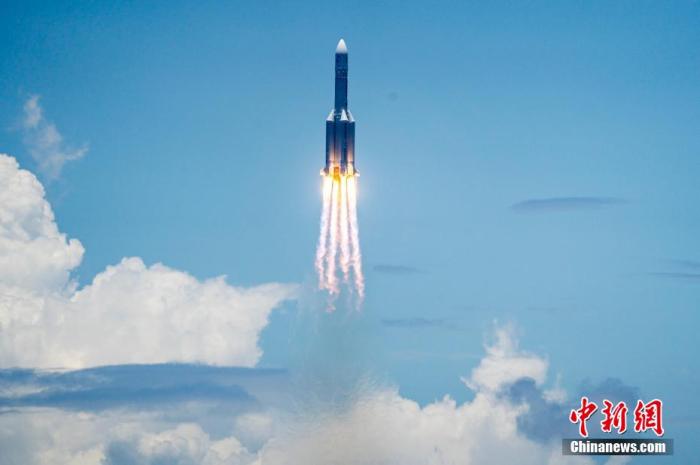China News Agency, Beijing, August 23 (Guo Chaokai) August 23 is the day when China's Tianwen-1 Mars rover rushed to the full moon. The reporter learned from the China National Space Administration's Lunar Exploration and Space Engineering Center that as of 12:00 on the 23rd, the Tianwen-1 Mars rover has a flight mileage of 86.5 million kilometers and a distance of 9.27 million kilometers from the earth. The probe is currently flying normally.
At 12:41 on July 23, China's first Mars exploration mission, Tianwen-1, was launched by the Long March 5 carrier rocket at the Wenchang Space Launch Site. The rocket separated at 13:17:25 and entered the intended location accurately. Fire transfer track.
Data map: The picture shows the Long March 5 Yaosi rocket ignited into space at the Wenchang Space Launch Site in China. Photo by Luo Yunfei
The Tianwen-1 mission mainly includes 6 flight phases: launch phase, ground fire transfer phase, Mars capture phase, Mars mooring phase, off-orbit landing phase, and scientific exploration phase. It is currently in the transfer phase of the ground fire and it will take about 6.5 months.
On July 27, the Tianwen-1 Mars probe looked back at the Earth from a distance of about 1.2 million kilometers, used an optical navigation sensor to image the Earth and the Moon, and obtained a group photo of the Earth and the Moon.
In order to ensure that the Tianwen-1 Mars Rover accurately rendezvous with Mars at the scheduled time, 4-5 orbital midway corrections and one deep-space maneuver are required in the fire transfer section. On August 2, the Tianwen 1 Mars Rover completed its first midway correction, and the 3000N orbital control engine was turned on for 20 seconds.
After entering the ground fire transfer orbit, the solar wing of the Tianwen 1 Mars rover was deployed to orient to the sun; the directional antenna was deployed to perform closed-loop tracking. The probe carried out work such as directional antenna zero correction, routine orbit parameter injection, orbit determination, and temperature management; during this period, it carried out self-inspection test and attitude maneuver test of the onboard equipment; the scientific data of the load was downloaded smoothly, and the flight control work was carried out normally.
According to news from the China National Space Administration's Lunar Exploration and Space Engineering Center, the deep space stations and VLBI stations participating in the monitoring and tracking of this stage are operating well, the measurement and control communication system is working normally, and the orbit determination accuracy meets the mission requirements. (Finish)

